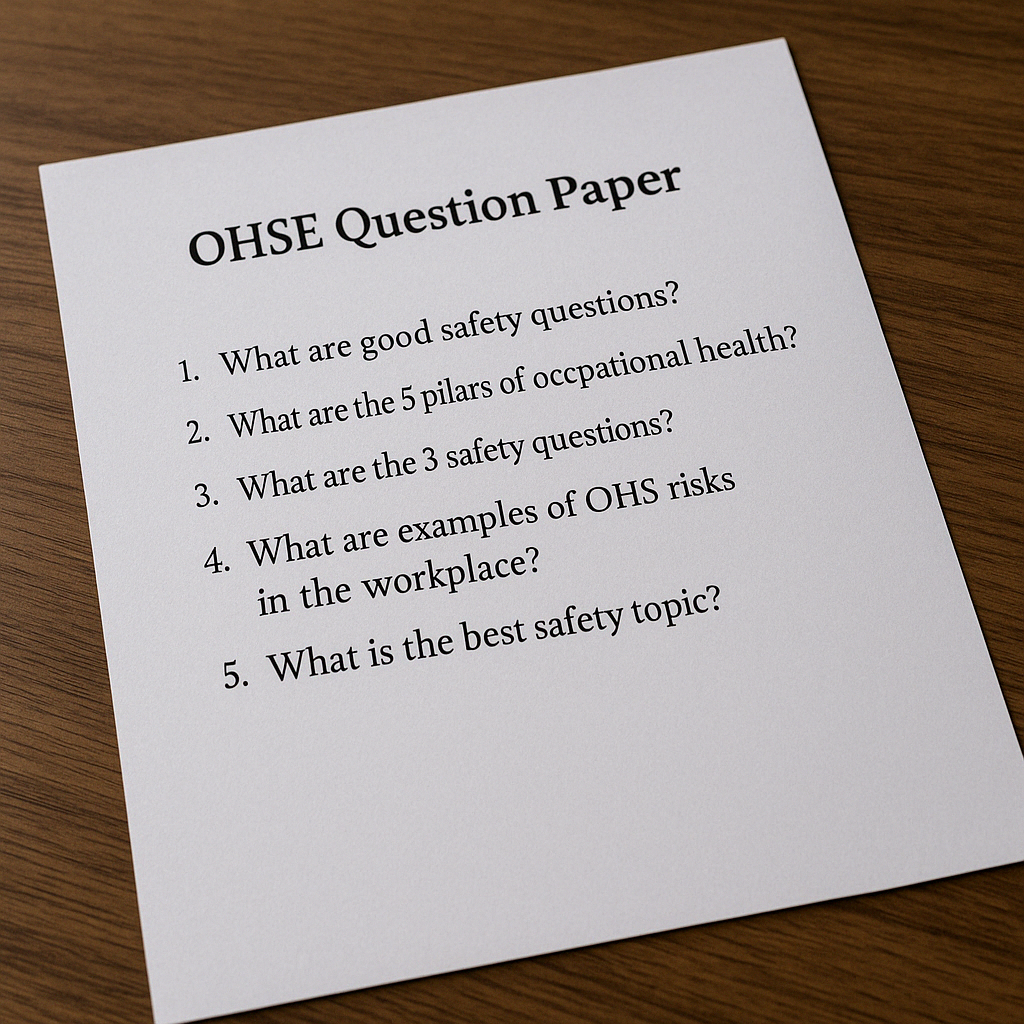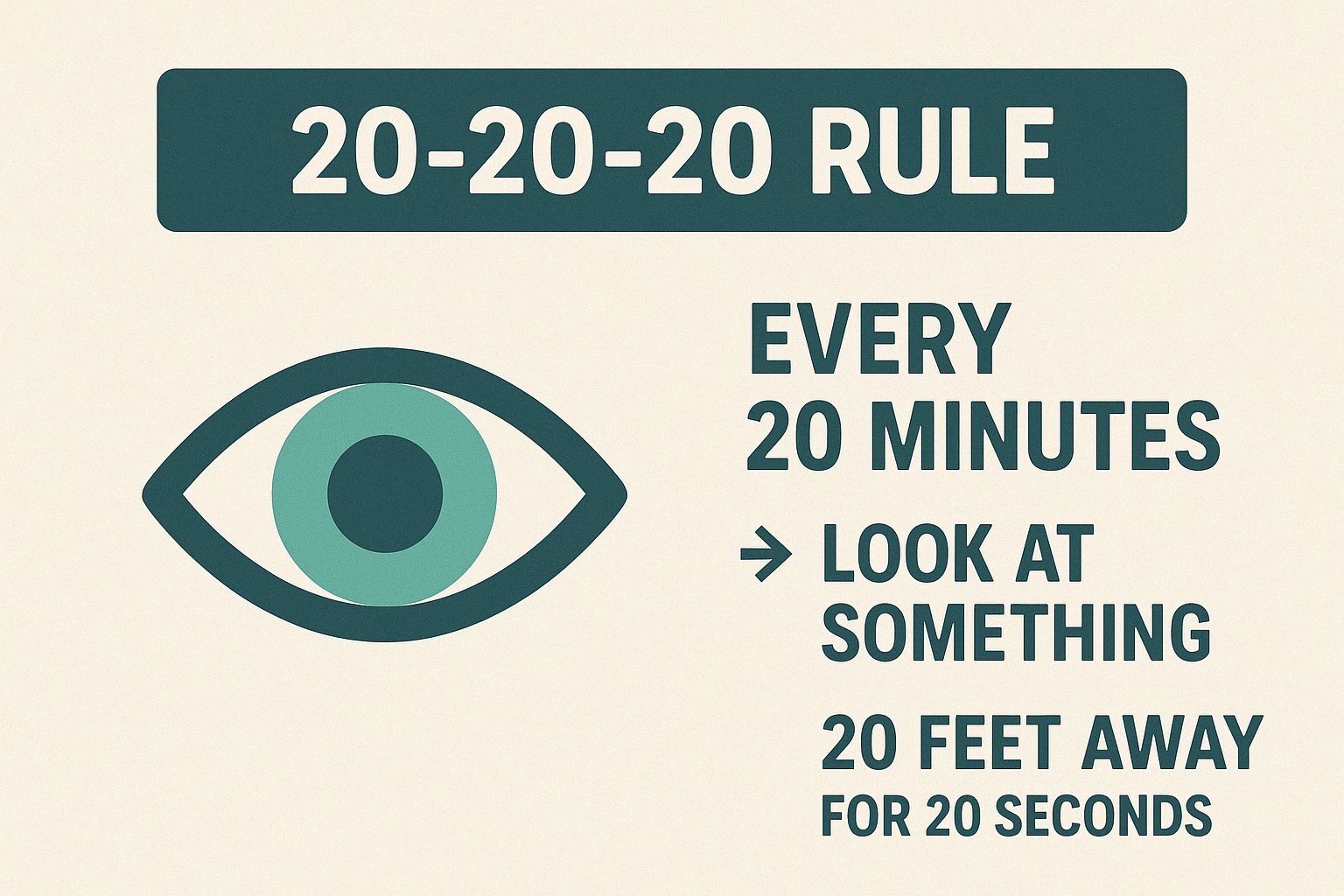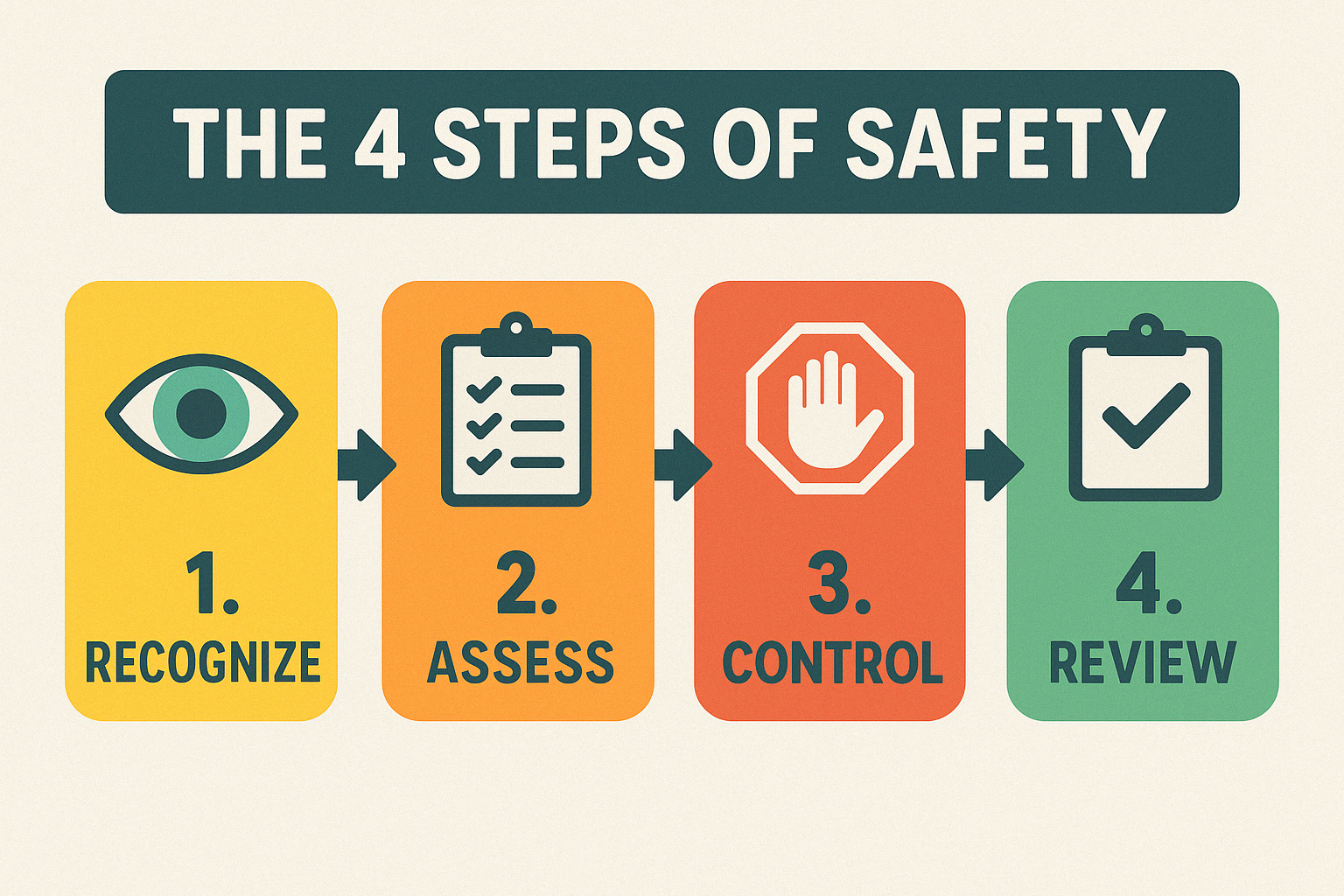Workplace safety is more than just compliance—it’s a culture. Whether you’re a safety officer, a business owner, or a curious worker, understanding fundamental safety concepts is crucial to ensuring everyone gets home safe at the end of the day.

In this detailed post, we answer some of the most frequently asked and essential safety-related questions.
What are the 5 pillars of occupational health?
The 5 pillars of occupational health provide the foundation for a safe and healthy workplace:
- Health Surveillance – Monitoring employee health for early signs of work-related illness.
- Workplace Risk Assessment – Identifying and evaluating risks to prevent incidents.
- Health Promotion – Encouraging healthier lifestyles among workers.
- Ergonomics and Human Factors – Designing jobs that fit the worker.
- Legislation and Compliance – Adhering to national and local occupational health laws.
What are the 3 safety questions?
These three core safety questions are part of many safety programs and help reinforce day-to-day risk awareness:
- What am I about to do?
- What could go wrong?
- What am I doing to prevent it?
These questions serve as a mental checklist before performing any task.
What are examples of OHS risks in the workplace?
Examples of Occupational Health and Safety (OHS) risks include:
- Slips, trips, and falls
- Exposure to hazardous chemicals
- Repetitive strain injuries
- Noise-induced hearing loss
- Electrical hazards
- Working at heights
- Biological hazards (e.g., mold, bacteria)
- Fire risks
- Manual handling and lifting
- Stress and mental health issues
Each risk should be identified and addressed through hazard assessments and control measures.
What is the best safety topic?
The best safety topic depends on the context, but widely impactful topics include:
- Hazard Identification and Risk Control
- Emergency Preparedness
- PPE Usage
- Safe Use of Machinery
- Mental Health and Stress Management
These topics are universally relevant and can be tailored to any workplace.
What are the 3 C’s of safety?
The 3 C’s of safety are:
- Caution – Be alert and anticipate risks.
- Communication – Share safety concerns and updates.
- Compliance – Follow rules, procedures, and safety standards.
Together, they form a proactive approach to injury prevention.
What are the 5 types of safety?
The five main types of safety in workplace environments are:
- Physical Safety – Protection from physical hazards (e.g., falls, cuts).
- Chemical Safety – Safe handling and storage of chemicals.
- Biological Safety – Preventing exposure to pathogens.
- Ergonomic Safety – Designing work tasks to avoid strain or injury.
- Psychosocial Safety – Mental well-being, stress management, and preventing harassment.
Each type requires specific training, procedures, and controls.
What is the 20/20/20 safety topic?
The 20/20/20 rule is primarily used in eye safety, especially in digital work:

- Every 20 minutes, look at something 20 feet away for 20 seconds.
It helps reduce eye strain and fatigue from prolonged screen exposure, making it especially relevant in office environments.
What is workplace safety?
Workplace safety refers to policies, procedures, and behaviors that protect employees from hazards. It involves:
- Safe equipment use
- Proper training
- Clear communication
- Emergency response planning
- Compliance with health and safety laws
Workplace safety is everyone’s responsibility, from management to new hires.
What are the 10 safety precautions?
Here are 10 basic safety precautions for any workplace:
- Wear appropriate PPE.
- Follow all safety procedures and training.
- Report unsafe conditions immediately.
- Keep work areas clean and organized.
- Use tools and machinery properly.
- Never take shortcuts on safety.
- Understand emergency procedures.
- Maintain proper posture and ergonomics.
- Stay sober and alert.
- Communicate hazards and near-misses.
What are the basic rules of safety in the workplace?
Core workplace safety rules include:
- Always follow instructions and training.
- Do not operate machinery you’re not trained on.
- Wear required safety gear.
- Keep exits and pathways clear.
- Follow proper lifting techniques.
- Report incidents or near-misses immediately.
- Be aware of your surroundings at all times.
How to manage problems in the workplace?
Managing workplace issues involves:
- Identifying the root cause of the problem.
- Open communication between involved parties.
- Using conflict resolution strategies (mediation, HR involvement).
- Implementing corrective actions or retraining.
- Monitoring to ensure resolution is effective.
A safe workplace also prioritizes psychological safety and trust.
What is the meaning of work safety?
Work safety is the proactive protection of employees from workplace hazards.
It means creating conditions where workers are free from injury or illness and have the training and equipment needed to perform their jobs safely.
What are the 10 safety rules?
Here are 10 universally applicable safety rules:
- Keep your workspace clean and hazard-free.
- Use tools and equipment safely and correctly.
- Report unsafe conditions promptly.
- Don’t take shortcuts.
- Stay alert to your surroundings.
- Use PPE as required.
- Follow lockout/tagout procedures.
- Don’t overload electrical circuits.
- Understand material safety data sheets (MSDS).
- Know the emergency exits and plans.
What are the 5 types of safety?
(Answered earlier, but to recap):
- Physical
- Chemical
- Biological
- Ergonomic
- Psychosocial
Each has unique risks and controls.
What are working conditions?
Working conditions include:
- Physical Environment (lighting, noise, temperature)
- Workload and Schedule (hours, overtime)
- Health and Safety (risks, PPE, training)
- Psychosocial Climate (harassment, pressure, morale)
- Legal Protections (paid leave, breaks, insurance)
Good working conditions enhance safety, productivity, and well-being.
What is the meaning of work health and safety?
Work Health and Safety (WHS) is a comprehensive framework focused on protecting the health, safety, and welfare of all employees. It includes laws, systems, and practices designed to prevent work-related injuries, illnesses, and deaths.
What is the meaning of workplace safety and health?
Workplace Safety and Health encompasses:
- Identifying hazards
- Mitigating risks
- Monitoring worker health
- Creating a safety culture
It aligns legal, physical, and psychological aspects of employee protection.
What are the 4 steps of safety?

The 4-step safety model:
- Identify hazards
- Assess risks
- Control risks
- Review and monitor controls
This cycle is the heart of workplace risk management and ensures continuous improvement.
What is the safety of work?
The safety of work refers to the practices, systems, and environments that ensure the work being done does not lead to injury, illness, or death.
It integrates human factors, engineering, management, and behavior into a safe working system.
Final Thoughts
Understanding these essential workplace safety questions builds a solid foundation for a culture of prevention and protection.
Whether you’re reviewing safety protocols or educating your team, keep these answers as a go-to resource.


No comments yet